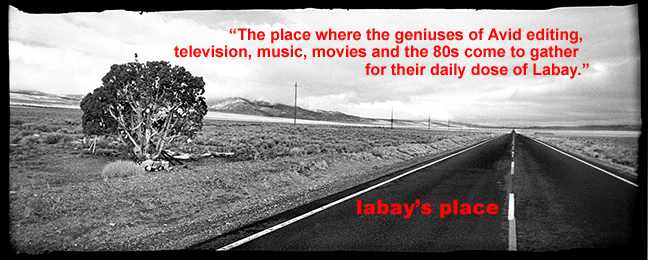(From The Avid Yahoo User's Group)
I recently cut together a few items for fun that are very cutty and fast against music that is moderately moving along, slowly.
I felt the cuts were right on, remarkably to the music.
I played it for my Philipino friend who spends his hours listening to very mellow atmospheric music. He felt I had cut it too fast -- the video was ahead of the music.
I then played the same thing for an actor who is very bright, very smart, he said, "You know, it almost was right on at the end."
He felt I hadn't missed it until the end.
This will be lost on most of you, but for those cutty editors out there, the question is:
Is there a connection between the cuts we do and who percieves them, or can we presume a general audiance?
I think we are all on different clocks.
Most people will see the images for the first time when they see your cut, so really they need longer than you do to take them in. Remember, they only see it once.
What is the point of fast cuts? I certainly cut lots of fast sequences, but why?
It's generally to inject some pace and life into the program.
If you have dramatic shots you need less cuts.
With HD I think you'll find editors changing the way they cut because people will be happy to look at pictures longer because they have more detail.
I buy this. I just did a series of spots for a client with offices in Dallas and New York City. The Dallas people (essentially mid-westerners) felt the spots were perfect (24 edits in
25 seconds) the NYC folks wanted it faster. We ended up adding three more shots, getting each average edit under a second.
I know that someone did a report on the "speed" of various cities. They measured things like steps per minute and conversational words per minute. The differences were dramatic.
My parents always think I cut too fast.
The perception of editing/montage in general has changed significantly over the course of time. In the beginning montage was considered a formalistic device since it drew attention to the medium (eg. Griffith, Eisnstein). Long shot long takes
(eg. Chaplin) were considered realistic.
The incredible thing is that nowadays a long take long shot draws in fact more attention to the medium than fast paced editing patterns. A contemporary audience is so much more used to fast-paced editing (dumbed down) that it doesn't notice it anymore. It does notice, however, the absence of it.
So one could argue that realist cinema (e.g. Brokeback Mountain) is in fact more formalistic these days than actual formalistic cinema (e.g. King Kong).
Another example of perception is cutting on the beat is often wrong. For example, if you are cutting on the beat, but one of your shots is a golf hit, you might want the hit in the visual to sync with the beat, not the cut itself.
That cut will be perceived by different people.
The real test is often when you cut something fast without any track at all. Then add a music cue and it's amazing how close most of the cuts actually are.
All this fast-paced editing causes EADD (Editor's Attention Deficit Disorder), which, in turn, reinforces faster and faster cutting styles. After all, it is us who give the audience that to which they become accustomed.
Chicken and egg here -- just who is responding to whom?
Longer shots and way, way, fewer effects will still produce the most involving experience, if we -- when we act as directors -- place faith in the reality that kids won't necessarily reject the profundity that is possible if they are given a moment of concentration.
In fact, they may learn to like it, and start thinking like ZEN masters do when they concentrate fully on one thing at a time. These folks always come out with the greatest understanding in the least amount of time, and with the most fun doing it.
[Amen, edit brethern.]
Subscribe to:
Post Comments (Atom)


1 comment:
So is the Ultimate Hilight 2 minutes of blur to most people? You know my answer.
Post a Comment